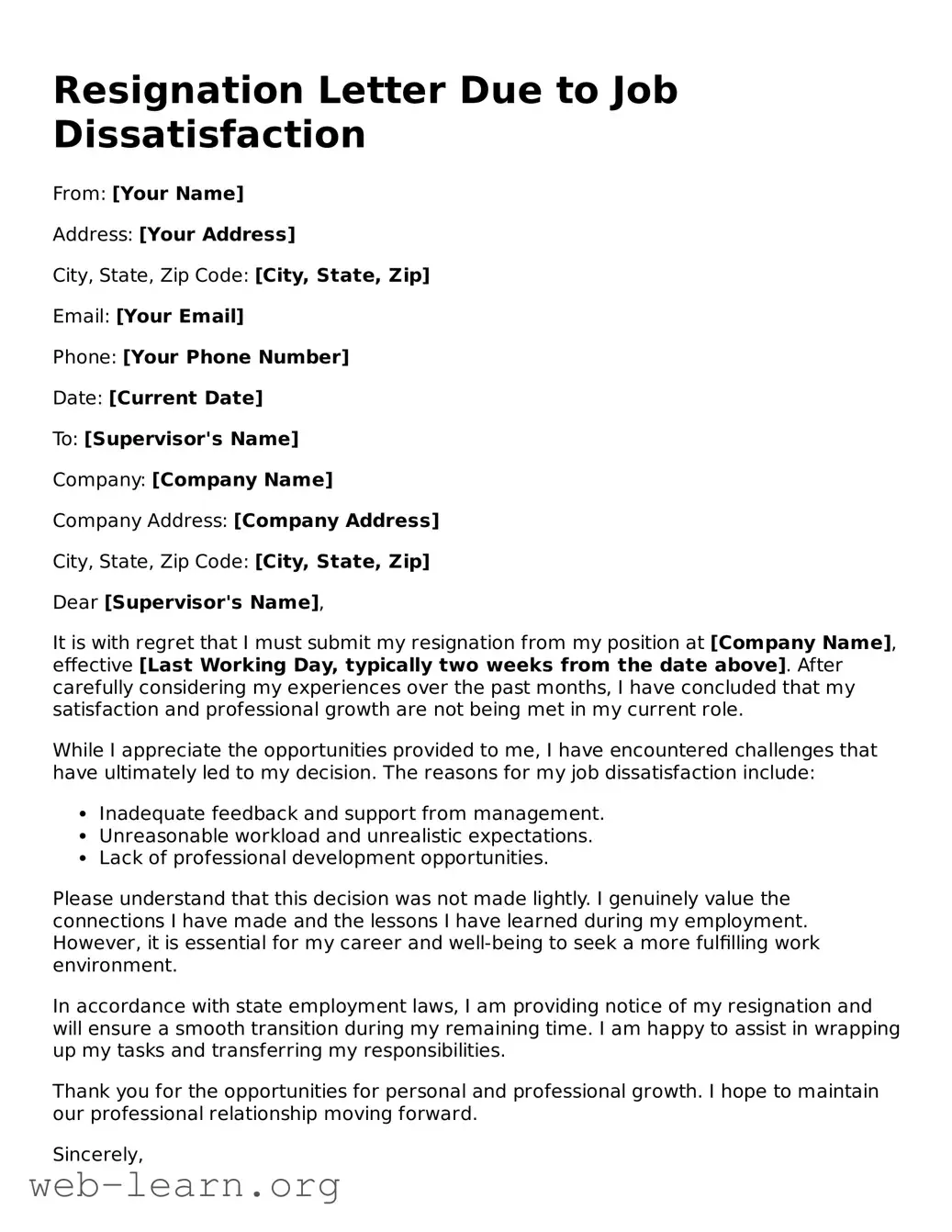Resignation Letter Due to Job Dissatisfaction
From: [Your Name]
Address: [Your Address]
City, State, Zip Code: [City, State, Zip]
Email: [Your Email]
Phone: [Your Phone Number]
Date: [Current Date]
To: [Supervisor's Name]
Company: [Company Name]
Company Address: [Company Address]
City, State, Zip Code: [City, State, Zip]
Dear [Supervisor's Name],
It is with regret that I must submit my resignation from my position at [Company Name], effective [Last Working Day, typically two weeks from the date above]. After carefully considering my experiences over the past months, I have concluded that my satisfaction and professional growth are not being met in my current role.
While I appreciate the opportunities provided to me, I have encountered challenges that have ultimately led to my decision. The reasons for my job dissatisfaction include:
- Inadequate feedback and support from management.
- Unreasonable workload and unrealistic expectations.
- Lack of professional development opportunities.
Please understand that this decision was not made lightly. I genuinely value the connections I have made and the lessons I have learned during my employment. However, it is essential for my career and well-being to seek a more fulfilling work environment.
In accordance with state employment laws, I am providing notice of my resignation and will ensure a smooth transition during my remaining time. I am happy to assist in wrapping up my tasks and transferring my responsibilities.
Thank you for the opportunities for personal and professional growth. I hope to maintain our professional relationship moving forward.
Sincerely,
[Your Name]
